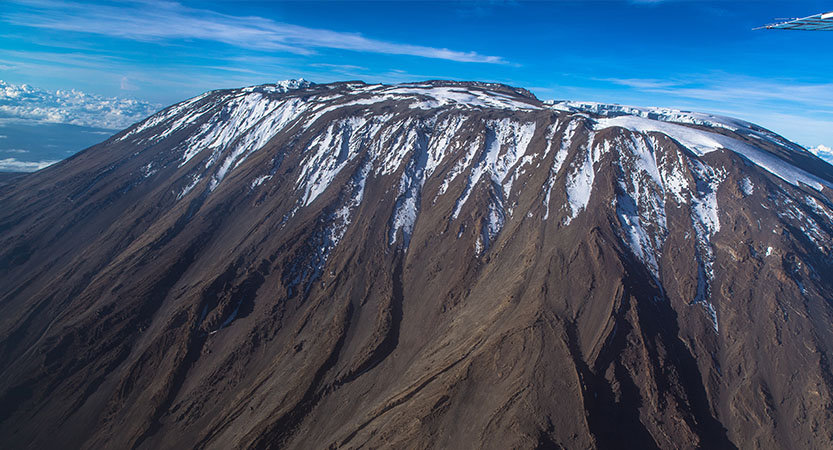Kilimanjaro: Global warming

When he wrote “The Snows of Kilimanjaro” in the 1930s, Ernest Hemingway described the summit of that African mountain as “wide as all the world, great, high, and unbelievably white in the sun.”
It’s still wide, but may not be white much longer, with some forecasts saying the remaining ice fields atop Kilimanjaro in Tanzania could be gone in 20 years or less. Controversy still exists over whether this is a casualty of climate change or whether changes in clouds and precipitation play a role.
The bare facts are these:
- 85 percent of the ice that covered the mountain in 1912 had been lost by 2007, and 26 percent of the ice there in 2000 is now gone.
- A radioactive signal marking the 1951-52 “Ivy” atomic tests that were detected in 2000 some 1.6 meters (5.25 feet) below the surface of the Kilimanjaro ice is now lost, with an estimated 2.5 meters (8.2 feet) missing from the tops of the current ice fields.
- Elongated bubbles trapped in the frozen ice at the top of one ice core show surface ice melted and refroze, apparently the only time there’s been sustained melting in this core in the last 11,700 years.
- Even a 300-year-old drought some 4,200 years ago didn’t melt the ice, though it did leave an inch-thick layer of dust. These observations confirm that the current climate conditions at Mount Kilimanjaro are unique over the last 11 millennia. The same changes are happening on Mount Kenya and the Rwenzori Mountains in Africa, in the South American Andes and in the Himalayas. You can make your own mind up whether this is just a coincidence! Have a look here to check out the debate http://www.skepticalscience.com/mount-kilimanjaro-snow.htm



